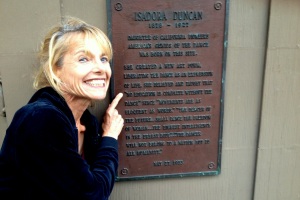Daring To Make Dance a Priority in Education

When public K-12 schools are pressured to decrease costs and devote more time to standardized testing, arts programs are one of the first to be cut. Despite a nationally adopted education agenda that seeks to promote creativity, critical thinking, and collaboration among students as well as meaningful ways to connect students to the school environment and thereby increase graduation rates, the arts are still not seen as central to the solution. At last year’s Big Ideas Fest, ISKME’s annual convening to propel innovation in education, we asked participants to design prototypes for projects that reinforced the value of arts in education. Community-generated solutions such as those generated at Big Ideas Fest contribute to a dialogue that needs to occur more frequently and more visibly at a national level if we want to bolster school art programs that have already proven to produce desirable student outcomes.
As to the value of arts education on a personal level, I don’t have to look much further than my mother, Jacquelyn Weiss, a professional dancer and dance educator for more than 38 years. She serves as Director of Dance at Vista High School, in San Diego County, California, which serves mainly low-income, English Language Learners. She teaches over 250 students a year and, over the past 23 years, she’s built the school’s dance program into one of 60 worldwide International Baccalaureate programs, which certifies students for entry into higher education. In her classes, students learn dance movements, choreograph original pieces, engage in constructive criticism of each other’s work, and compare global dance traditions through physical movement and in reflective writing exercises.
Dance education teaches students skills beyond the simple act of movement. My mother points out that her students “use creative problem solving to express themselves through movement” when responding to prompts given in class. She also says her students learn through collaboration:
“My job is to try and successfully pair them with the students who will support them. When they get positive feedback from their peers, it really gives them confidence. Of course they like my recognition as well, but what students really respond to is earning the respect of their peers. When they feel accountable to each other and make creative works that are truly unique, they get the opportunity to stand out to their peers in healthy ways that really build their character and allow them to gain the confidence they need to be successful in all realms of their school career.”
Given that nationally only 12 percent of public secondary schools offer dance programs, perhaps the greatest feat of my mother’s career has been to keep a public school dance program afloat for more than 23 years. As the only full-time, female faculty in the physical education department at her school, she has stood up to coaches and school administrators, who, on numerous occasions, have tried to eliminate or drastically scale-down her program to make additional space for the school’s football program. She has also secured funds for safer dance facilities and defended the merits of her program in an administrative climate focused more on national standardized fitness tests than on the value of developing students’ abilities to creatively express themselves. In a community with scarce exposure to formal arts education, the consistency and longevity of her program has influenced generations of students from the same families who have shared the invaluable experience of studying dance and being recognized for their creative works.
This year, my mother is asking her students to create works inspired by Malala Yousafzai, the 15-year-old Pakistani activist for female education.
“I want my students, both male and female, to reflect on role models of female empowerment in education and how increasing access for education in women actually benefits the entire world globally. Naturally, my students most often draw from the things they emotionally feel close to when creating their works, like their romantic relationships, but it’s important to push students to also connect to larger, societal issues. I’m really excited to see what they create this year.”
Curious about how other inspiring education practitioners are exploring the value of arts in education? Listen to some of these presentations made at last year’s Big Ideas Fest:
Distinguished Professor of Cognitive Science and Linguistics at UC Berkeley George Lakoff encourages educators to incorporate the arts into educational curriculum as a proven way to nurture creative thinking.
Kiff Gallagher is founder of MusicianCorps, a musical peace corps that promotes music for public benefit and social impact by traiining and placing musicians as teachers, mentors, and care workers in public schools and other public settings.
Matt Harding, creator of Where the Hell is Matt?, charts the viral growth of a simple dance video into a global phenomenon, which promotes learning dance in the style of local communities to illustrate a world without fear.
Beth Harris and Steven Zucker, Khan Academy Deans of Art and History and Co-founders of Smarthistory, show how they demystify art history using creative narrations and technology to help increase access to and understanding of classic images and forms.
Picture Caption: Dance educator, Jacquelyn Weiss, in front of the San Francisco birthplace of Isadora Duncan, a visionary artist and pioneer in dance education.
June 20, 2013




